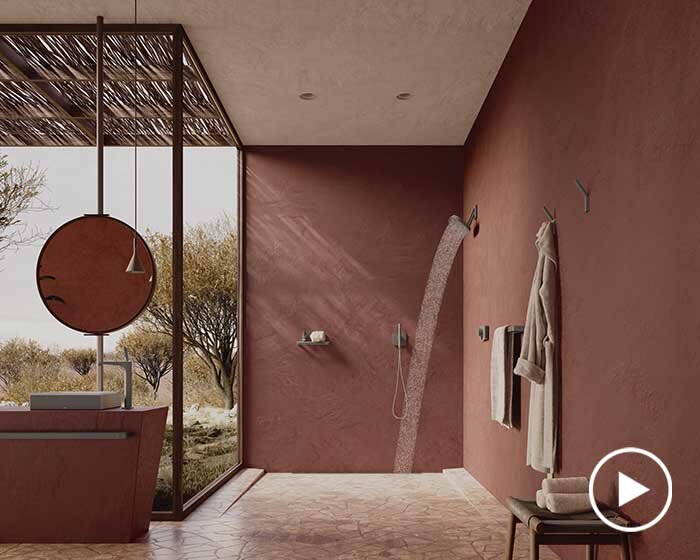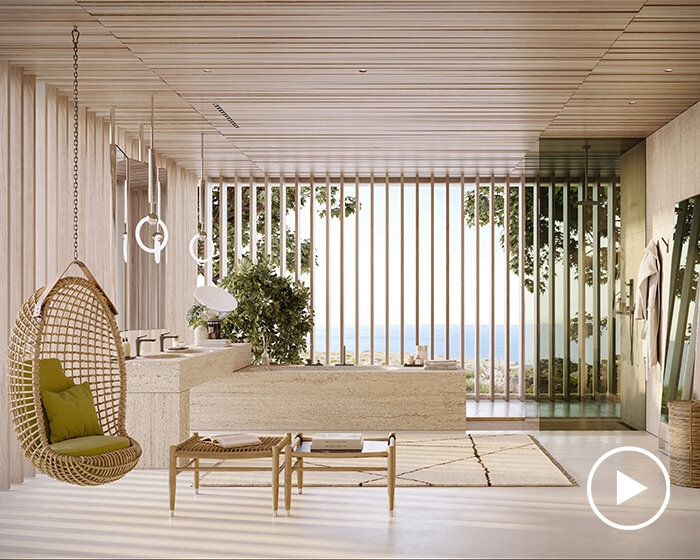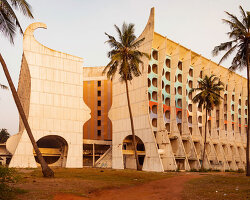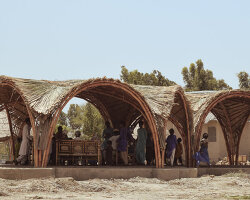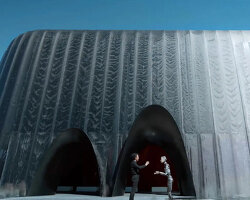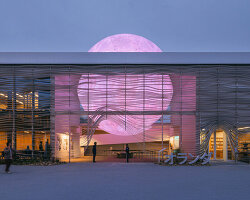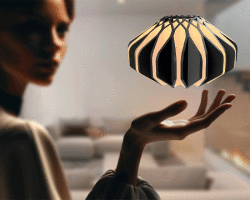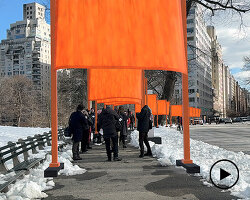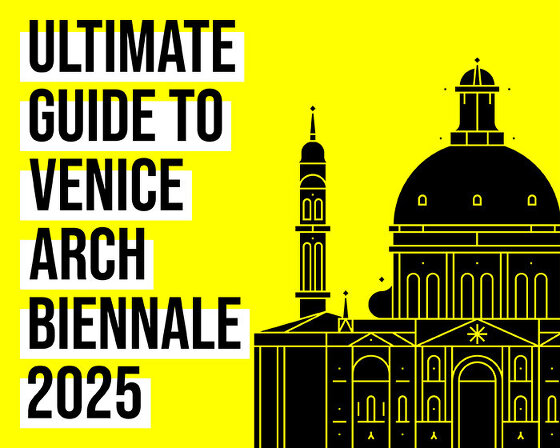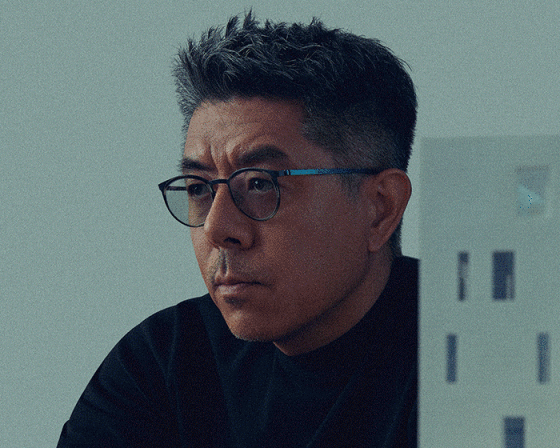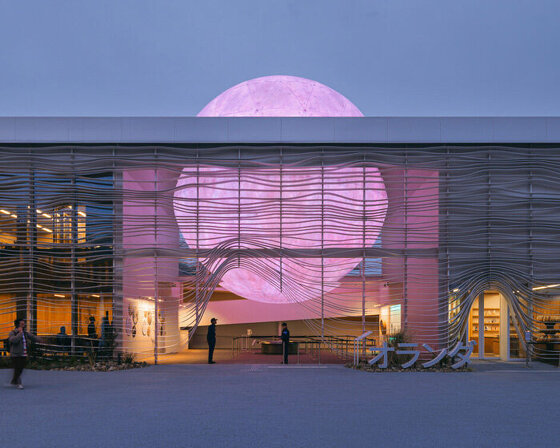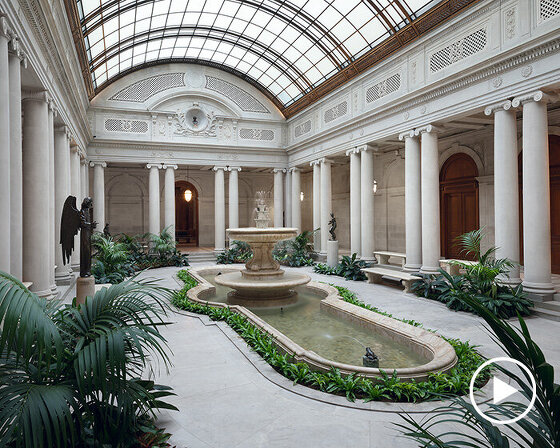meet innixAR: an unreinforced masonry shell
Researchers from IE University, Princeton University, and the University of Bergamo collaborated to construct innixAR, an unreinforced masonry shell positioned at IE University’s campus in Segovia, Spain. The resulting project takes shape as a shaded gathering space for intellectual discussions among students and faculty members of IE University, as well as a serene meditation area.
This vaulted pavilion explores the fusion of digital technologies and traditional building methods. By leveraging augmented reality (AR) and 4D funicular design, innixAR enables vault artisans to create stunning masonry structures in mid-air, eliminating the need for temporary molds or centering of guidework, thus reducing waste. Therefore, the aim of the project is to underline the potential of combining traditional building crafts with engineering technology and pave the way for environmentally friendly, low-carbon architecture.
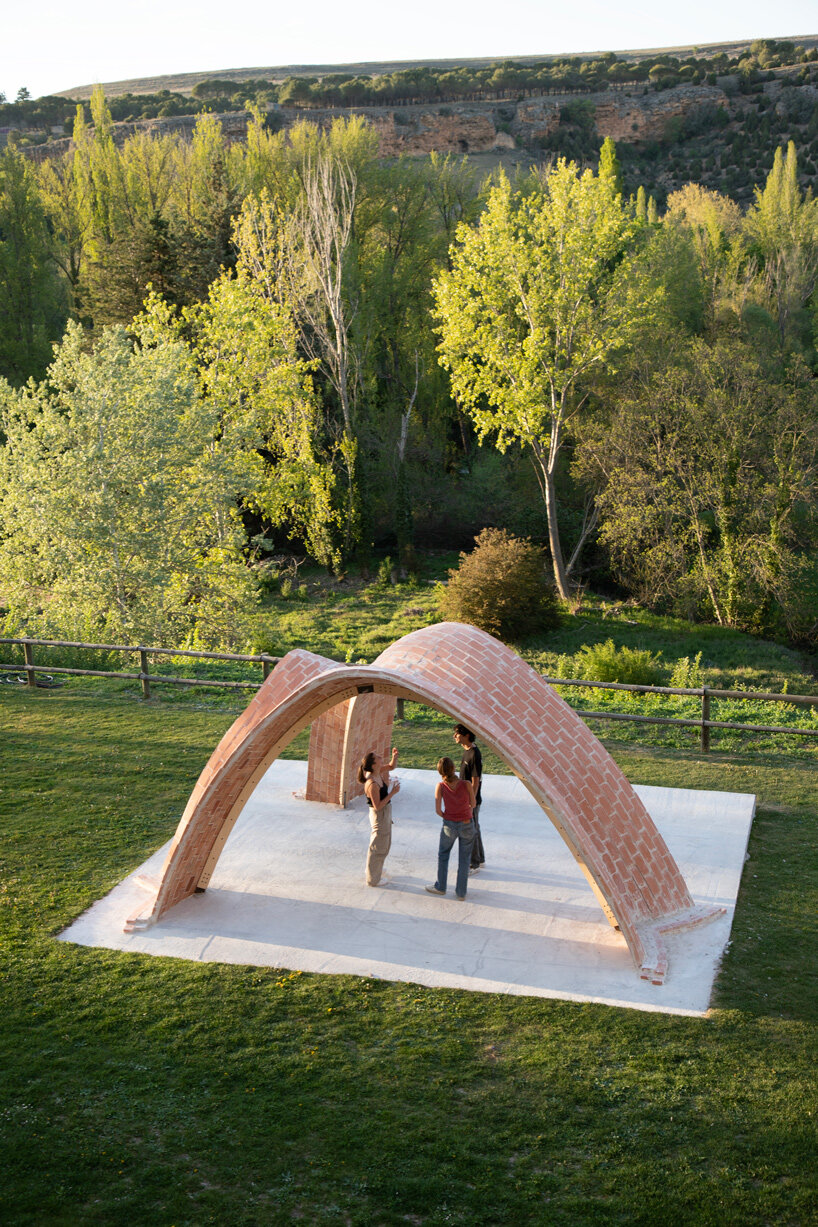
all images by Wesam Al Asali
a vaulted pavilion using augmented reality
innixAR exemplifies the harmonious integration of contemporary design, AR-powered construction methods, and traditional building techniques, demonstrating that digital technologies can enhance and complement craftsmanship. The pavilion is the result of a three-year collaboration between IE School of Architecture and Design (see more here) and the Form Finding lab at Princeton University (more here). The collaboration is generously supported by the Faculty Initiative Fund of Princeton’s Institute for International and Regional Studies.
With views towards the Eresma River, innixAR showcases three curved vaults supported by stay-in-place timber ribs. These ribs served as permanent centering during construction, allowing for an efficient assembly process that started from the internal ribs and progressed towards the edges, a process informed by traditional vault-making methods. The choice of materials in innixAR pays homage to the time-honored technique of tile vaulting, employing lightweight terracotta tiles and rapid-setting plaster of Paris to create slender compression-only structures. The positioning of the vaults was carefully considered to frame three scenes from the natural and historical surroundings: the meandering path of the Eresma River, an ancient Segovian monastery, and the rolling hills of the central Spanish plateau.
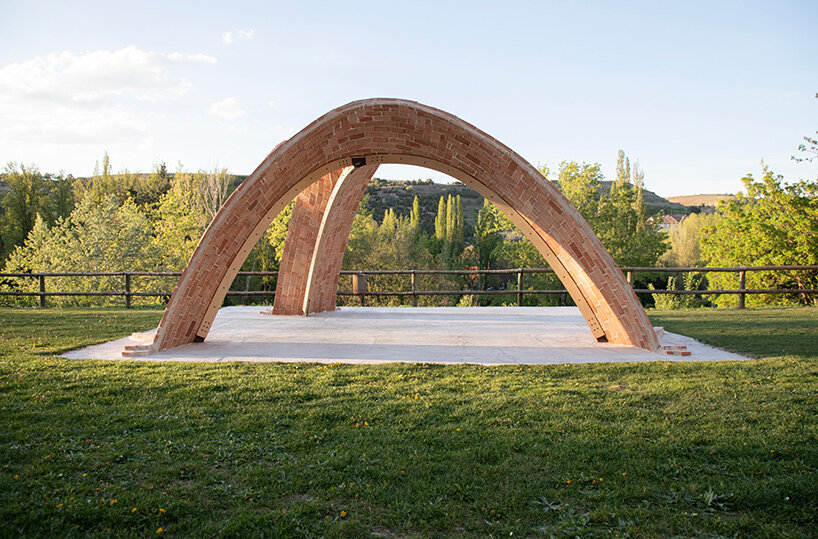
innixAR embodies three curved vaults supported by stay-in-place timber ribs
The design of innixAR pavilion was shaped using an innovative 4D funicular design technique pioneered at Princeton University. This method combines assembly sequencing and constrained form-finding to create construction-oriented, compression-only forms. The geometric constraints applied during the funicular design process were derived from an in-depth exploration of vernacular vault construction, including extensive discussions with Salvador Gomis Aviñó (CERCAA), a vault master builder from Valencia with two decades of expertise in the field.
The combination of augmented reality (AR) and vernacular tile vaulting proved to be highly successful in bringing the vaults of innixAR to life. The vault builder was guided on-site using an AR headset that overlaid holograms onto the physical reality. These holograms provided precise information about the vault’s geometry, shape, and brick-coursing pattern. This innovative use of AR eliminated the need for physical molds, guides, and formwork typically required in traditional vault construction methods, saving both time and materials. Furthermore, AR played a crucial role in monitoring the structural behavior of the vault throughout the construction process.
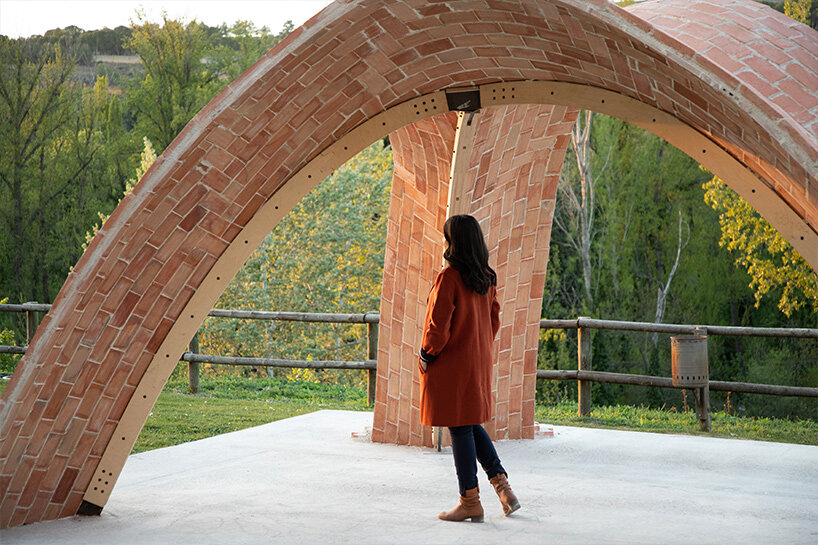
the material choice celebrates the time-honored technique of tile vaulting
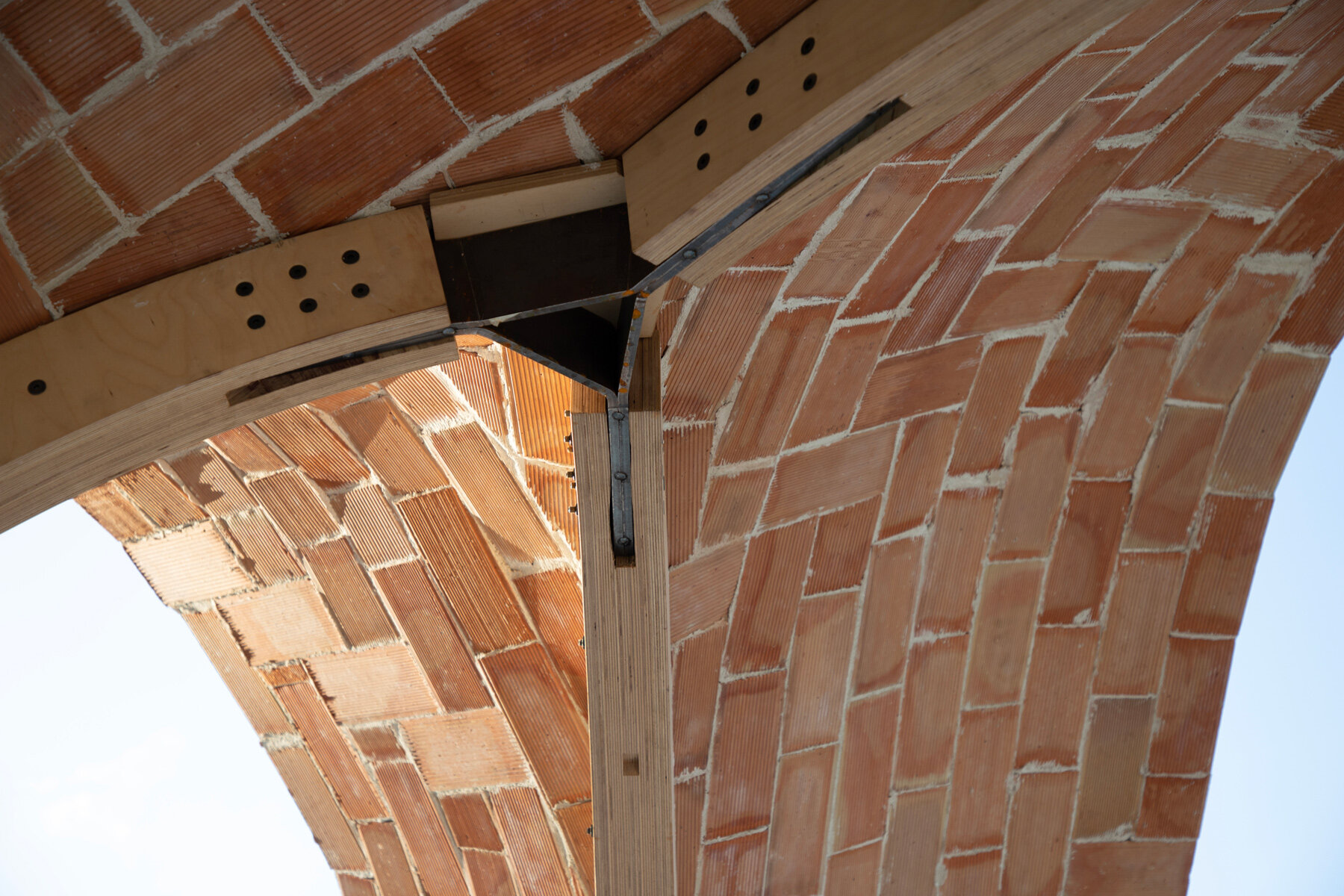
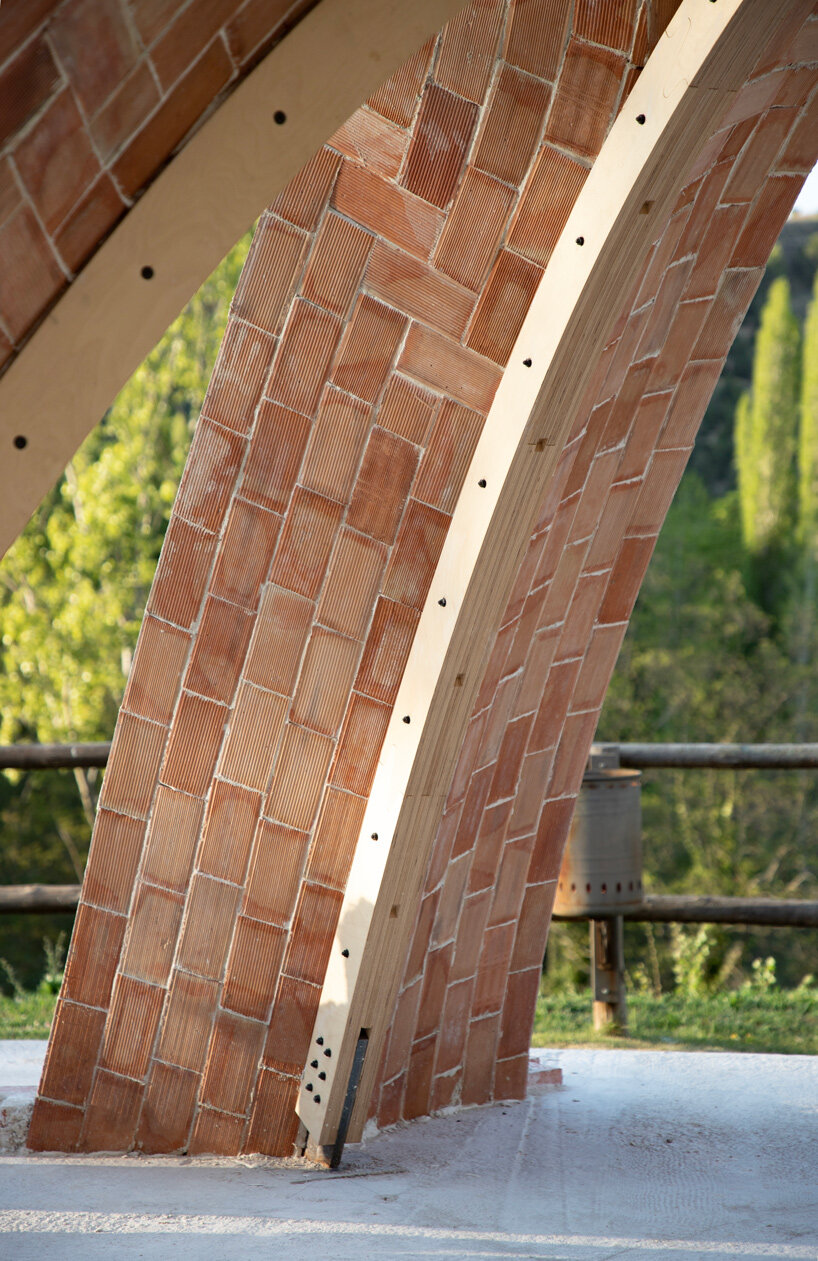
the assembly process started from the internal ribs and progressed toward the edges
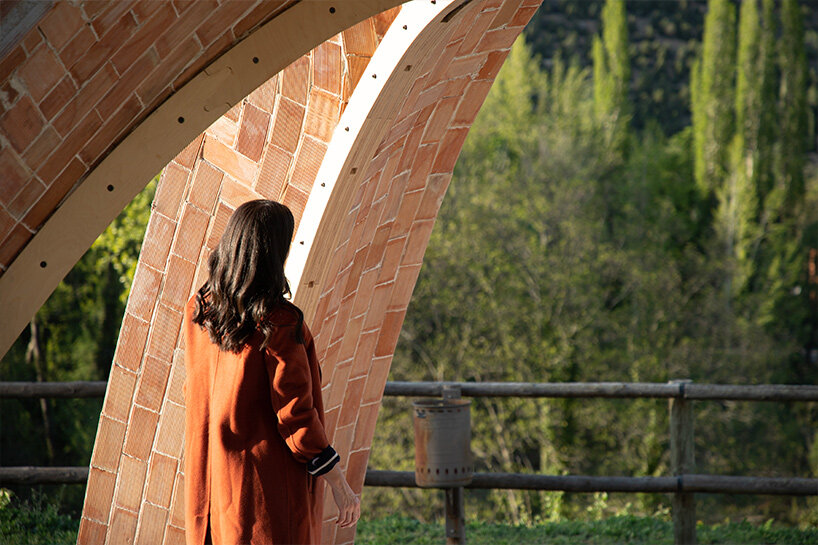
the positioning of the vaults was carefully considered to frame scenes from the surroundings
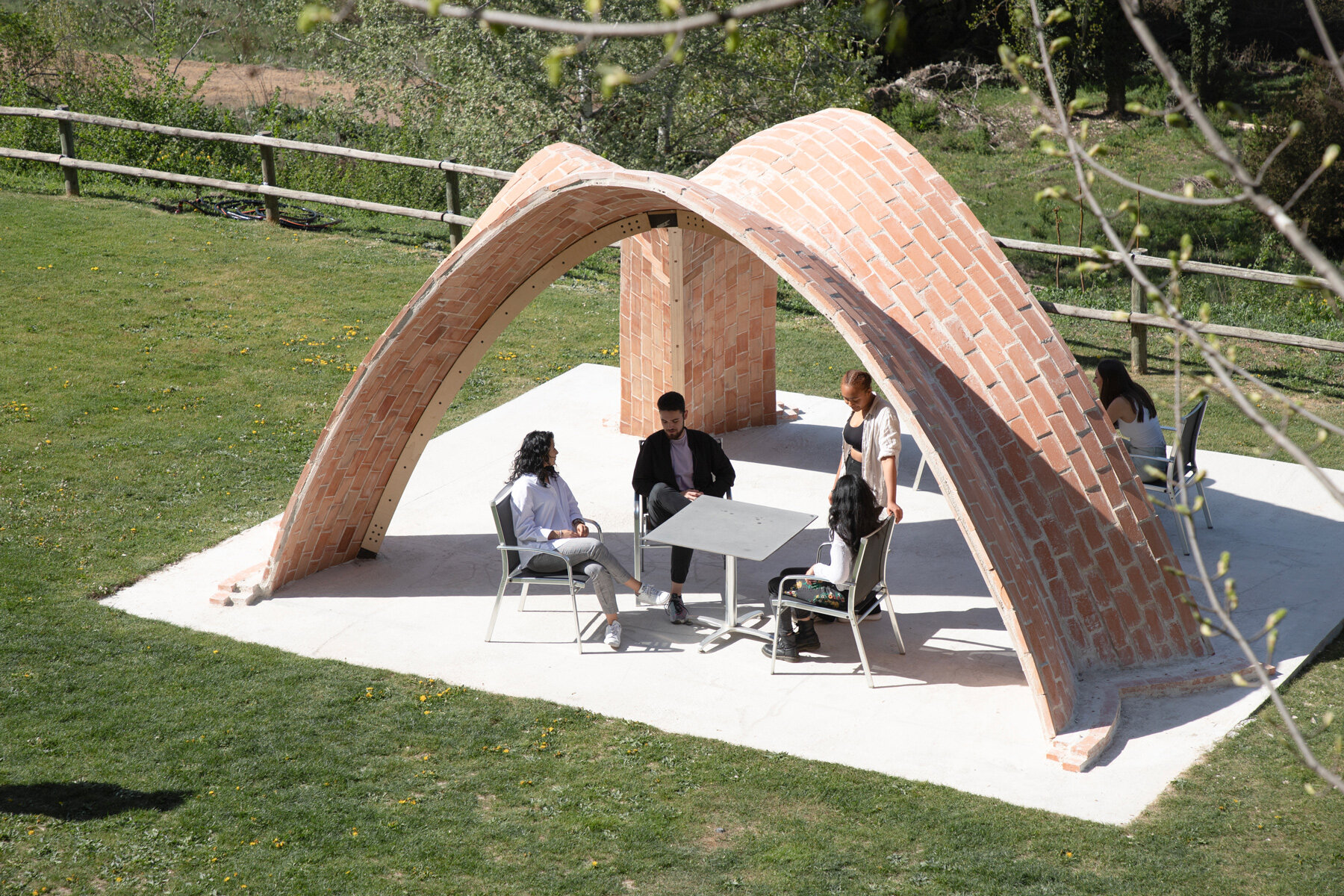
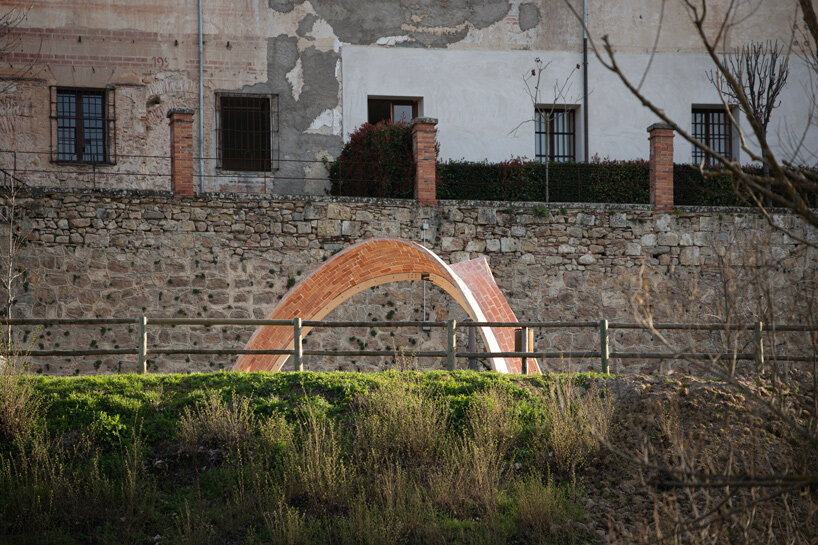
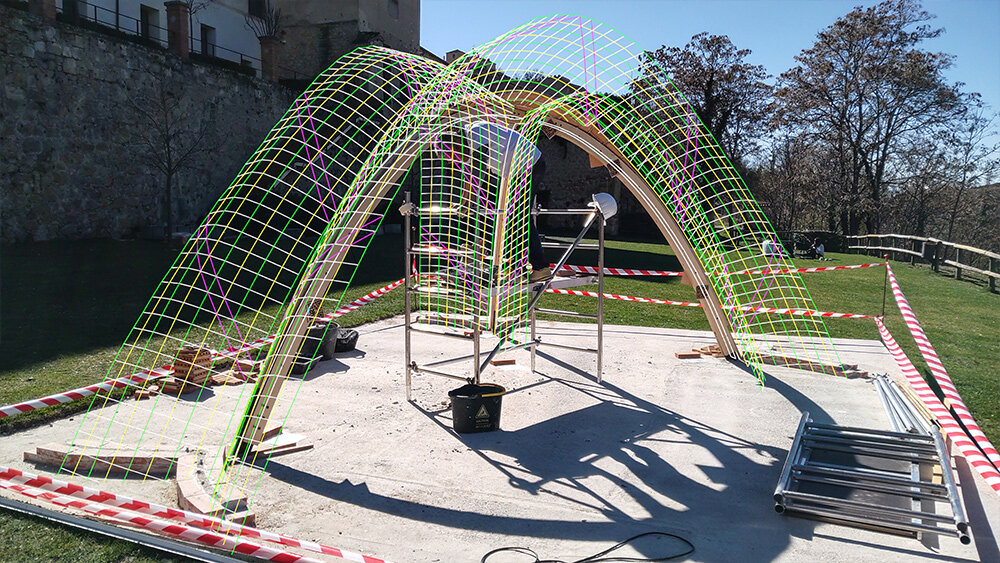
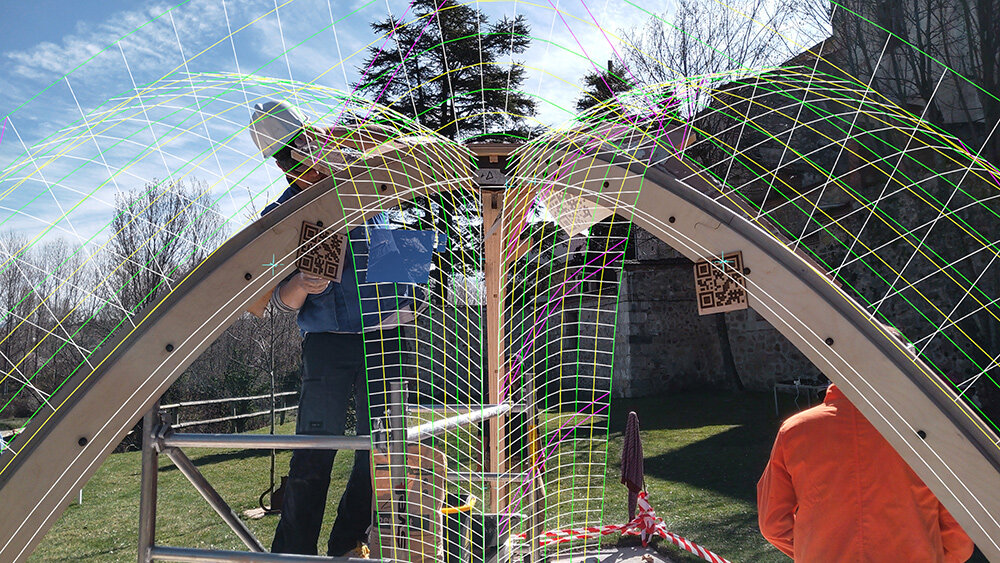
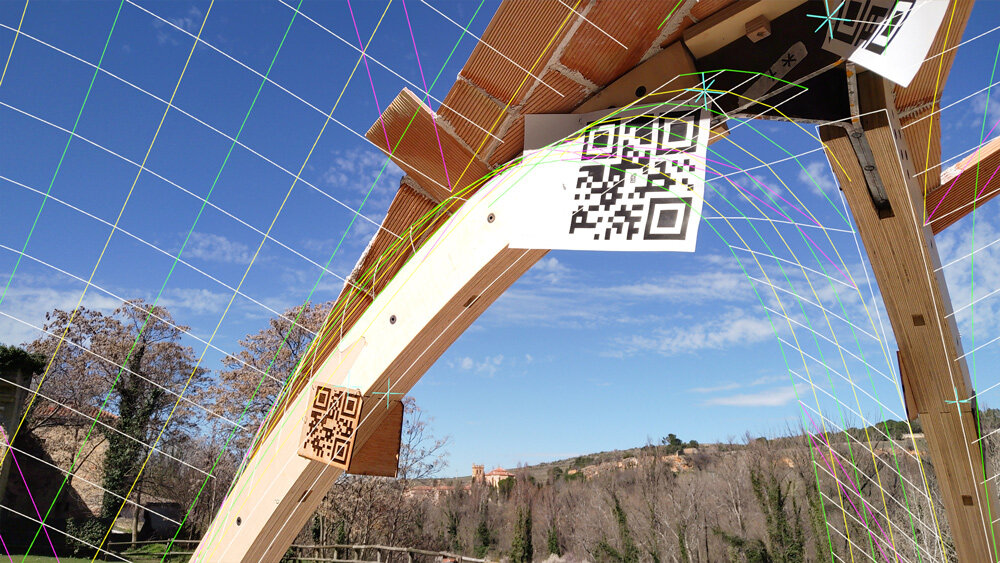
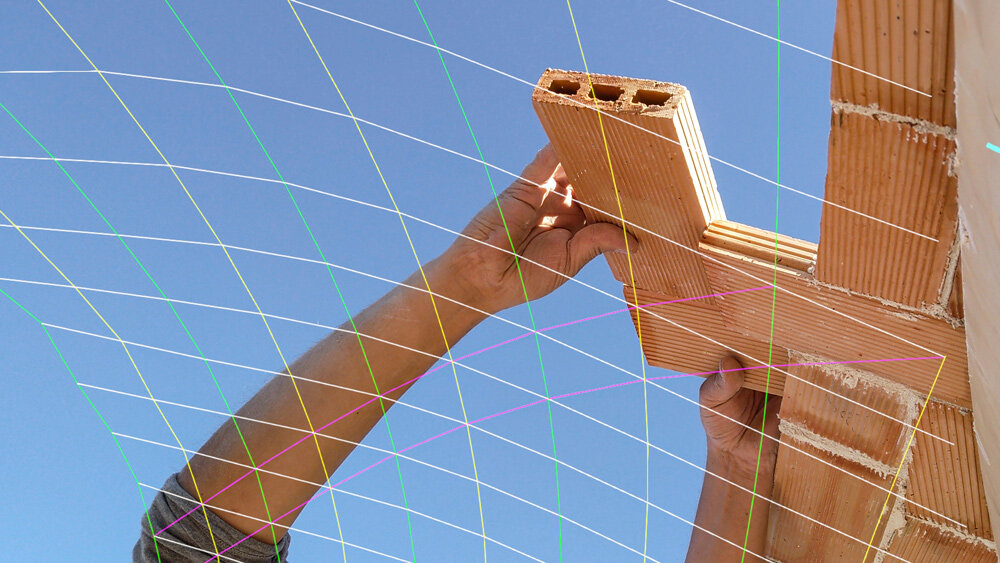
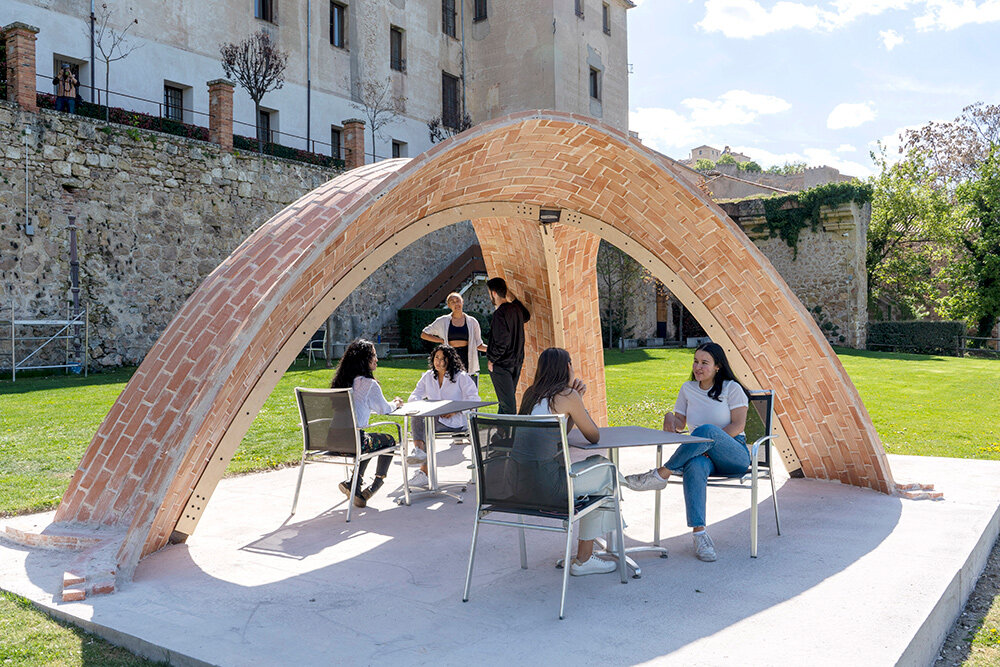
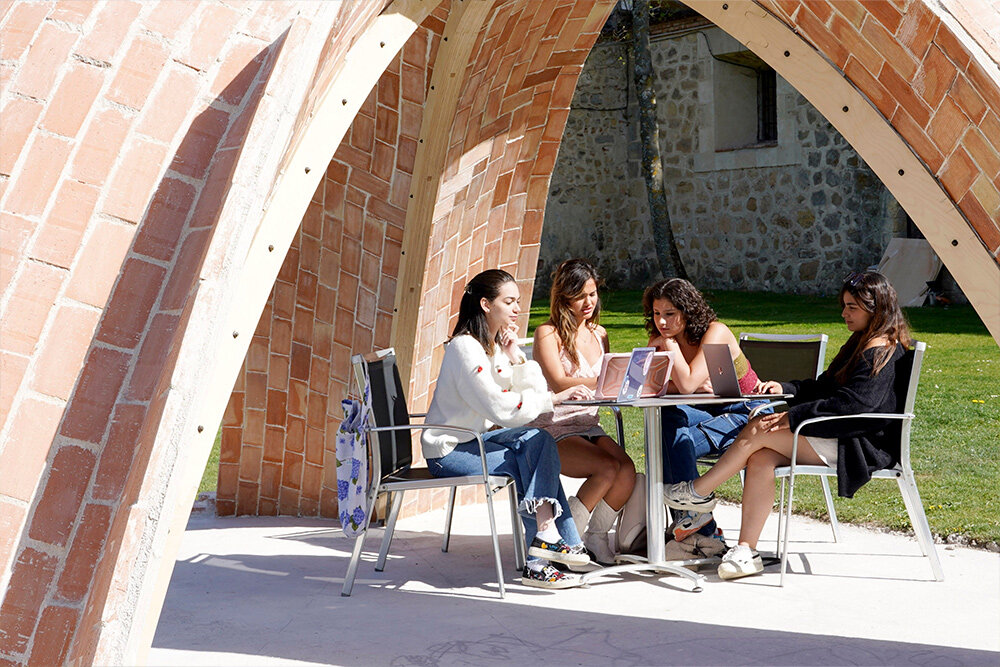
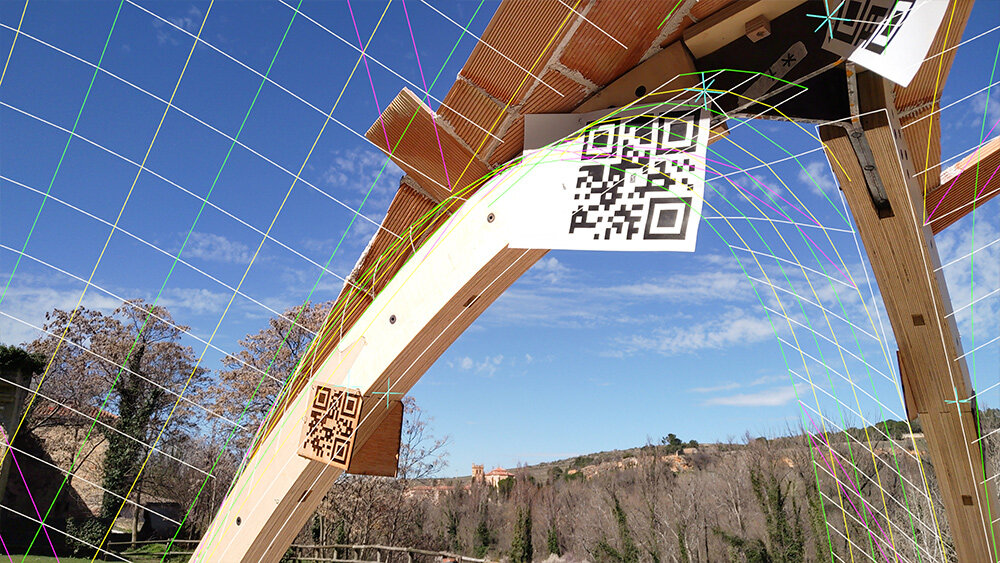
project info:
name: innixAR
researchers: from IE University, Princeton University, and the University of Bergamo
project management: Wesam Al Asali, Sigrid Adriaenssens
design team: Rafael Pastrana, Robin Oval, Edvard Bruun, Wesam Al Asali
construction: Salvador Gomis Avino, Wesam Al Asali, Robin Oval, Rafael Pastrana, Vittorio Paris
sponsors: Princeton University’s Institute for International and Regional Studies (PIIRS), Cerámicas La Paloma

